Ro Caminal
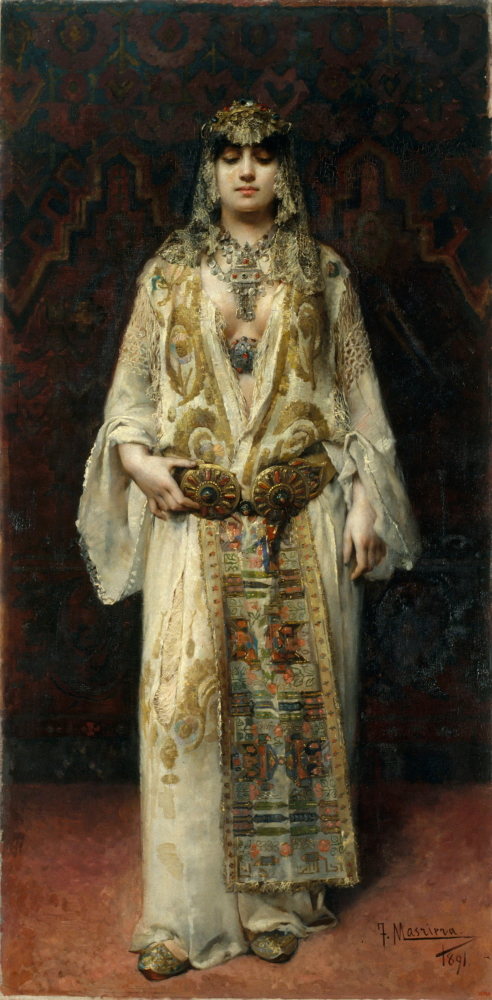
In the Presence of the Lord, Francesc Masriera, 1891
Looking necessarily means making use of our cultural, socioeconomic and personal heritage to see. The look acts as a technology that disciplines us when interpreting what we see.
The spectator, in the first instance, cannot look stripped of that burden that conditions what they see. The museum, not only as a container of works, but as a discourse maker, should exercise its responsibility by encouraging people to look and, therefore, to see in a different way.
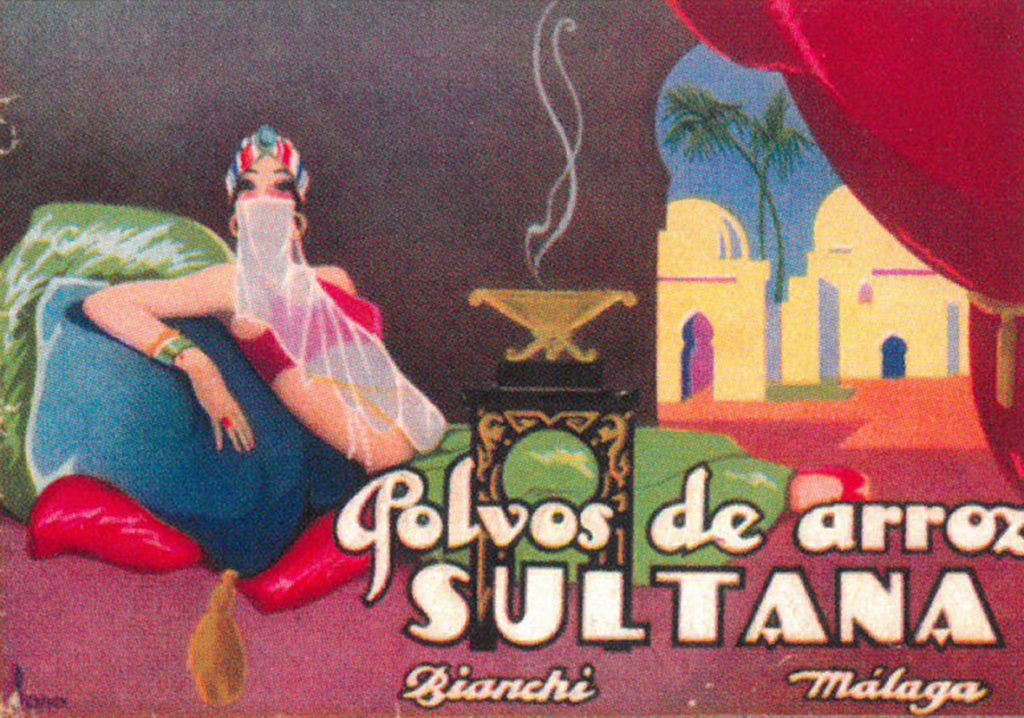
Polvos de arroz Sultana. Perfumería Bianchi (Sultana rice powder. Bianchi Perfumery), Málaga. Archive E. Martín Corrales
Room 48. The orientalists
The Orient evokes in us an exotic and exuberant imagery, it transports us to other places, to those distant places that Europe dedicated itself to subjecting and exploiting under the euphemism of the civilising mission of colonisation.
The Apostle Saint James Francisco Camilo. Museo Nacional del Prado | General Prim at the Battle of Tetuan, Francesc Sans Cabot, 1865
Each European country generated its own Orient based on its overseas territorial interests, thus converting the inhabitants of these places into the embodiment of otherness. It cannot be subjected under the prism of equality. Thus, the orientalist machine set its difference-producing gears in motion. Its task, to produce a corpus of knowledge tailored to Western interests. Under the objectivity of science, the locals were observed in the same way that fauna and flora were observed and catalogued.
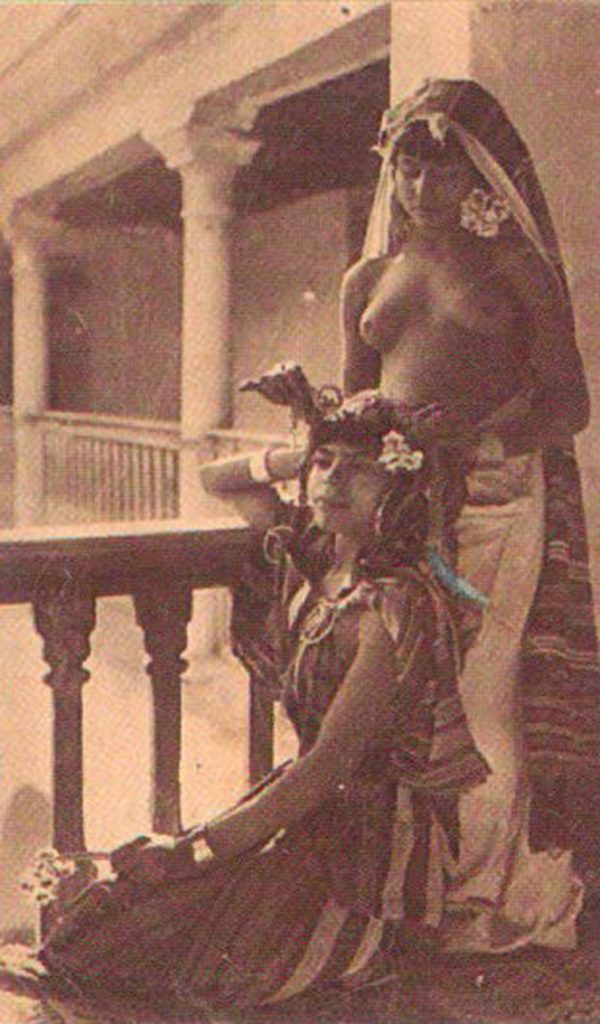
Fillettes bédouines. Ed. Lehuert et Laudrock. Archive E. Martín Corrales
The Orient was, in Western eyes, a woman. A woman hyperbolised in her desire and also in her request, that she offered herself, almost lasciviously demanded to be taken, possessed and occupied. An Orient and an otherness that responded more to Western fantasy than to existing reality.
Reviewing history should also mean reviewing its cultural productions, contextualising and highlighting the circumstances in which they were produced and the interests they served.
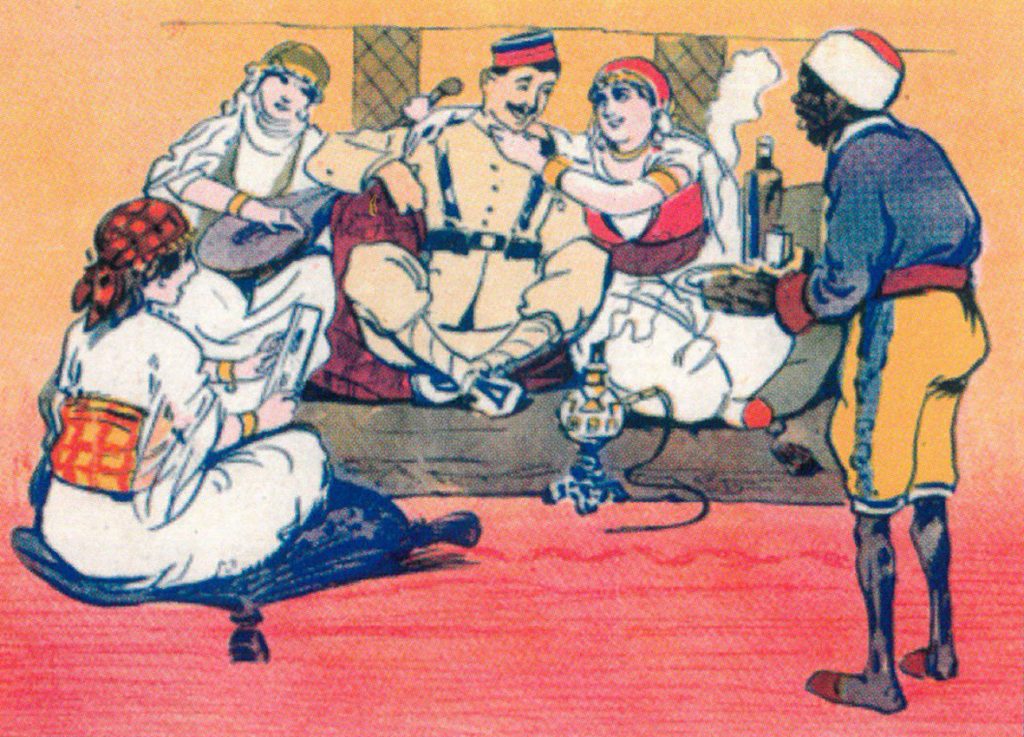
The conquests of the Spanish soldier. Archive E. Martín Corrales
Spain and its imperialist tradition, provider of rich and abundant raw materials, was on the verge of shipwreck. It was time, then, to look for new horizons so that the colonial enterprise would not stop. Spain was on the brink of ruin and the logical expansion under these circumstances was close. It should have followed in the footsteps of France, which from 1831 occupied the port of Algiers, from where it began to expand. Morocco became the Spanish Orient.
Spain disguised its colonial desires by relying on the past and the common ties that united it to the north of Morocco with the ambivalent use of Al-Andalus.
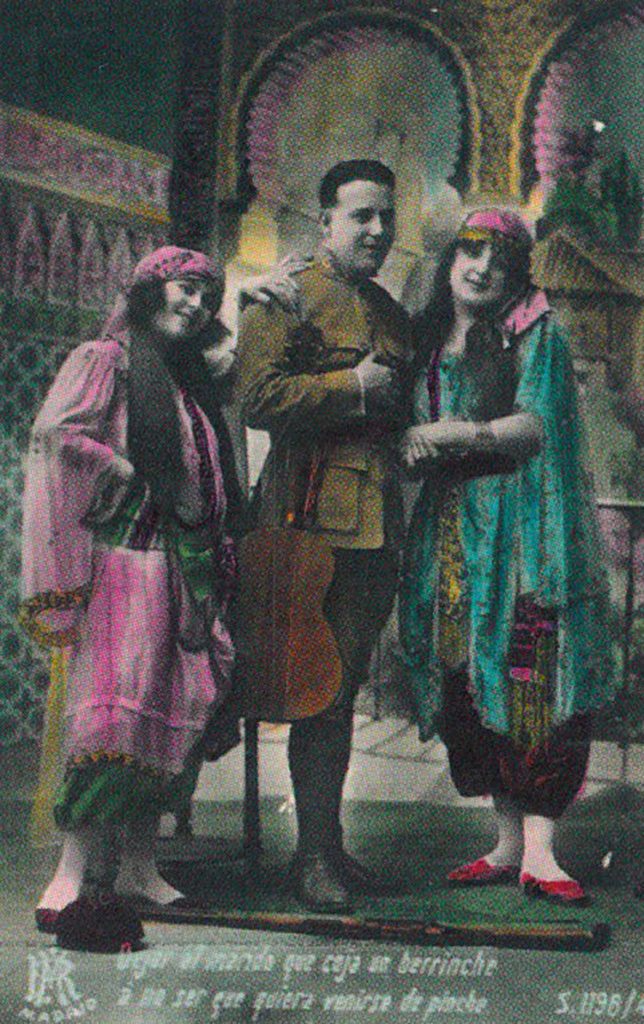
Studio photos. Madrid Rápido. Archive E. Martín Corrales
In the Presence of the Lord, Masriera, 1891. The Pacific Penetration
The bourgeoisie and their contradictions. The representation of the supposed hypersexuality was an attraction for the Catalan bourgeoisie, a great financier of African campaigns, of peaceful penetration (of commercial roots) and promoter of local modernity. The bourgeoisie saw in Orientalist paintings a way of fitting their sexual and economic desires into daily life, in their context of fierce Catholic morality. In contrast to the Orientals, their women belonged to the imagery of chaste wives and good mothers. Thus, Orientalism found a good market among them, just as it is now curiously finding it among the art collectors of the Gulf countries. Patriarchy has no borders.
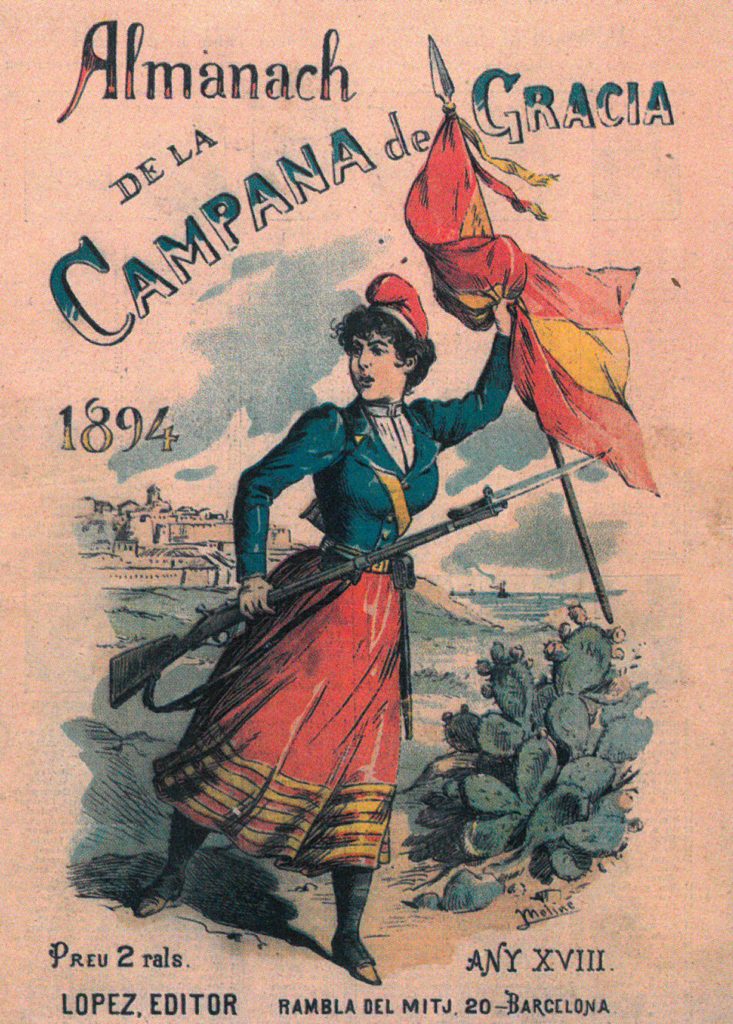
Cover Almanach de la Campana de Gracia, 1894
Masriera, from a family of wealthy jewellers, travelled extensively in Europe, but never left it, which is why I chose this work. It represents the perfect Orientalist painting, only in competition in room 48 with The Warrior’s Rest (Antoni Fabrés, 1978), that symbolically completes the cycle of feminisation of the oriental.

The Warrior’s Rest, Antoni Fabrés, 1878
I am concerned about the function of the museum, its current role and its transparency in showing its collections due to the immediacy of the image in the transmission of stereotypes. A museum committed to the present, to today’s society, must make an effort to show the viewer the inside and outside of the image, to show its deception, as a re-presentation, so as not to perpetuate them.
Under this motivation my work process begins in room 48, about In the Presence of the master. Yes, ‘master’ in lower case, señor translated into English as lord. Señor devoid of its mystical connotations. (Translator’s note: The official translation is Lord, but the author feels that Master would be more suitable, as if the original señor had been written in lower case)
The process has combined the work of the mediation team and my own.
The mediation team incorporated this work into the Let’s talk about art itineraries, where a dialogue is held with visitors based on works of art using, among others, the Visual Thinking Strategies (VTS) methodology, a methodology in which the facilitator remains neutral. His task is to stimulate and facilitate the direct dialogue of the spectator with the work, who analyses the image based on his or her own references, until conclusions can be drawn in dialogue with the participants.
For my part, I had numerous individual conversations with visitors to the room. Conversations that began with the same methodology, but that later incorporated the provision of new information to the viewer to see how it affected their perception of the work, forcing them to reformulate their look or maintain it despite everything, if they so wished.
The conversations with the visitors were both disappointing and very interesting. Disappointing to see how visitors believed that the situation represented was real, it was possible, that is to say, it could happen in reality outside the canvas, not only in 1891, but also today. We all know that Muslim women are submissive, Muslims subjugate them, and we are much better. Interesting reasoning that pushes me to consider, even more so, how necessary the task is of carrying out a critical review from the institution and its discourses.
Oriental fantasy is as relevant today as it was two centuries ago. The Oriental, our Oriental: the Moroccan, is no longer someone distant, but continues to be made to feel inferior, feminised, sexualised, violent and archaic object. Unfortunately, the Lord continues to be all of us.










